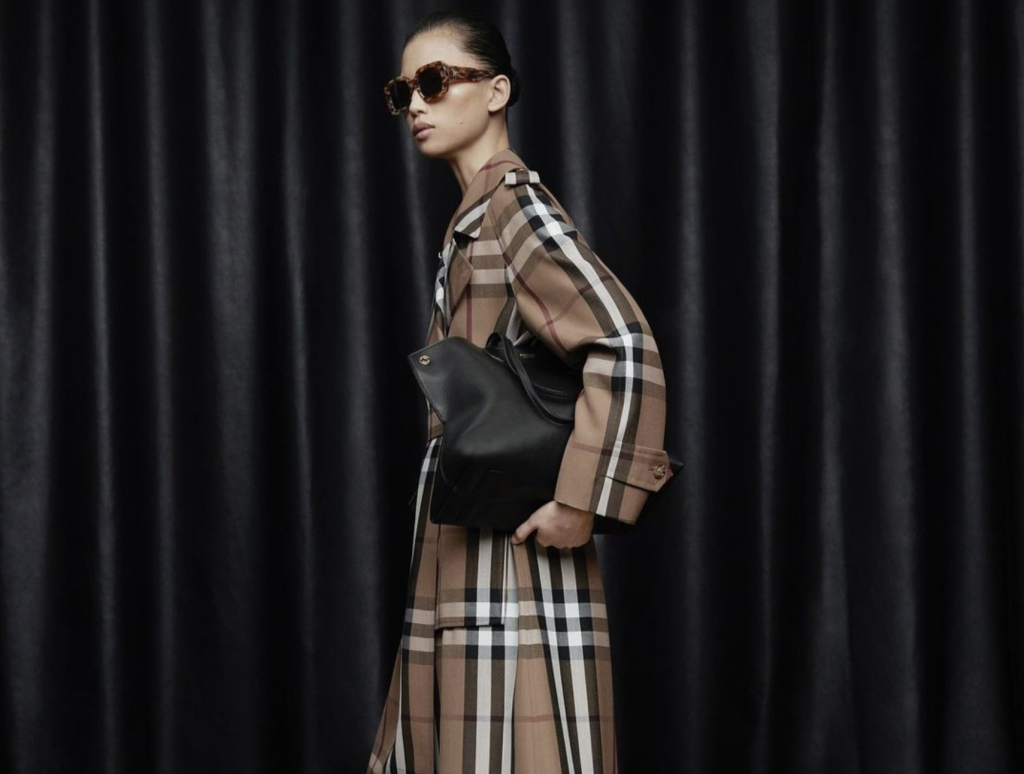Burberry revealed that its sales were up by 32 percent for the first three months of 2021, enabling it to beat analyst expectations. Despite a 10 percent drop in its 2.34 billion pounds ($3.29 billion) annual revenue, and a projected slump in operating margins for the year ahead, the brand had good news in that full-price sales were up by 63 percent on a year-over-year basis (and compared to a 12 percent rise for the same period in 2019) thanks to sales in mainland China, Korea and the U.S. The rise in full-price sales is noteworthy, as it is a key aim in the large-scale revamp that has been underway at Burberry since 2017 under the watch of CEO Marco Gobbetti, who aims to cement it in the luxury realm alongside the likes of LVMH and Kering-owned brands.
Sales were up in the first three months of 2021 amid COVID rebounds in Asia and the U.S., Burberry revealed on Thursday, citing demand for new leather goods offerings, such as its Pocket and Olympia bags, which accounted for more than 60 percent of leather goods sales; an influx of “new and younger” customers seeking out creative director Riccardo Tisci’s offerings; and local customer traction, “thanks to innovative selling formats during lockdowns.”
A few additional takeaways from Thursday’s report: Burberry’s full-price sales in Mainland China for the fiscal year (March 28, 2020 to March 27, 2021) were up by 53 percent on a year-over-year basis, and up by almost 70 percent in the Korean market. Full-price sales increased in the U.S. by almost 50 percent, and Burberry saw a striking rise in e-commerce sales across the board, with triple-digit growth coming into play during the first 3 months of the year. On the flip side, the 165-year-old fashion company “cautioned that profit margins in its new financial year” – which began on March 28 – will “be dented by increased investment,” Reuters reported on Thursday, a revelation that sent its London Stock Exchange-traded shares “sharply lower.”
As for the status of Marco Gobbetti’s multi-phased approach to elevating the standing of the Burberry brand, including by “increasing full-price sales, re-energizing the brand value,” renewing its product offerings, limiting wholesale distribution, reimagining its customer experience elements, the former Givenchy and Celine CEO stated that “in the last three years we have transformed our business and built a new Burberry, anchored firmly in luxury.” Even amid the COVID-19 pandemic, the chief executive said, “We achieved our objectives for the period and delivered a strong set of results in FY21, ending the year with good full-price sales growth.”
In a corresponding conference call on Thursday, as highlighted by Bernstein, Burberry revealed that for Phase 2 of Gobbetti’s revamp, it is focused on “the importance of continuing to invest in brand, the full-price sales growth, margin expansion and strong cash generation, and ESG initiatives.” The latter includes an emphasis on “diversity and inclusion, communities, and environment.” Bernstein analyst Luca Solca stated in a note on Thursday that “strategic progress” in the effort to “transform Burberry into a true luxury house has been achieved between 2017 and 2021,” while pointing to a “significant opportunity” for the brand to “focus on higher value categories” in furtherance of that initiative. At the same time, he says that “there clearly remains more to do” given that Burberry’s sales for the first three months of 2021 “were still down 5 percent” compared to the pre-pandemic January-to-March quarter in 2019.
Burberry revealed on the call that the “price increase option is open for the group given its lower pricing points compared with other luxury brands,” but asserted that its “current focus is to drive volume increases.” And in terms of one of the top-of-mind topics for most groups at the moment – M&A, the company stated that it is currently focused on “vertical integration rather than acquiring other brands.”
Looking ahead, Burberry said that it “expects revenue to grow in the medium term at ‘a high, single-digit percentage’ compound annual growth rate at full-year 2021 constant exchange rates,” per Reuters, with the brand asserting that such growth would be driven by “full-price sales as the fashion company exits markdowns in mainline stores in full-year 2022.”











